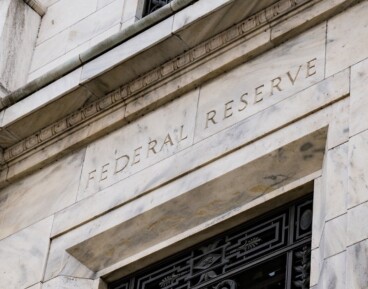Jak rząd USA mógłby zmienić Rezerwę Federalną
Kategoria: Analizy
St. Louis Federal Reserve President James Bullard spoke to Bloomberg News Editor in Chief Matthew Winkler this morning at Bloomberg’s The Year Ahead 2014 Conference in Chicago. What he said there confirmed my comments las week about the Fed’s consideration of a deflationary forward guidance threshold.
I had written in September that I expected one of the next big moves by the Fed to be establishing a lower bound threshold for inflation. Apparently, this is in active discussion according to the Wall Street Journal as the Fed is reluctant to actually change its existing guidance. Change is necessary because the US economy has slowed and inflation is decelerating, making outright deflation a threat in the event of recession. Macroadvisros estimates for Q4 2013 real GDP growth are now down to 1.4% as the increase in mortgage rates has taken its toll. As a result, US retailers fear a pullback by consumers in the upcoming holiday season. Bullard sounds optimistic, but his idea of an inflation floor tells you he is actually very guardedly optimistic.
Earlier today, I wrote that the Fed now has three options (link for subscribers here): either admit its prior forecasts were too optimistic and change guidance, add additional thresholds like an inflation lower limit threshold, or add triggers to the thresholds to signal when hikes would actually occur. Bullard seems to favor the second option.
Below are the Bullard video and a summary of his comments.
Source: Bloomberg Television
Bullard’s comments:
– Drags on the US economy are waning
– He sees reasons for optimism on U.S. economy in 2014
– He sees 3% growth or more next year
– He’s still concerned about low inflation
– Inflation likely to gradually come back to target
– Fed should consider inflation floor
– He sees 1.5% as appropriate level for inflation floor
– Inflation floor could be addition to forward guidance
– Inflation floor wouldn’t represent change to guidance
– ‘Cumulative’ labor market progress is a key idea
– Sustainability of labor market gains are still unclear
– Moving thresholds might damage credibility
– QE is data dependent
– Advocated cutting IOER to zero
– Committee has debated interest rate on excess reserves (IOER) for over 4-5 years
– Unsure if there’s momentum for cutting IOER


